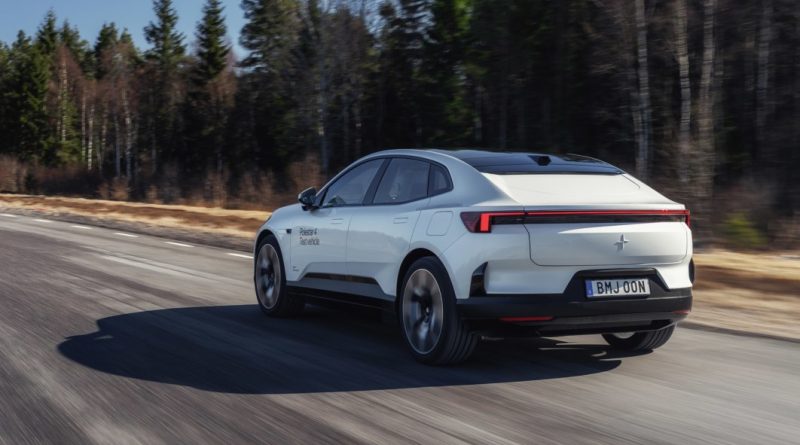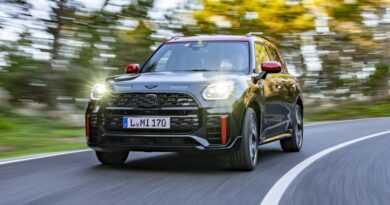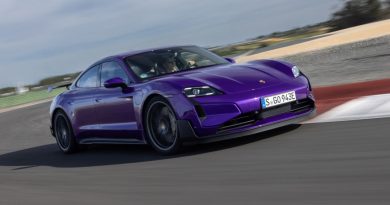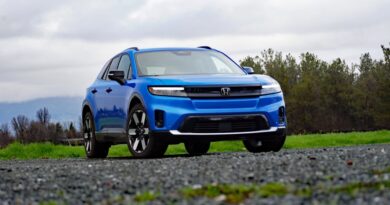Polestar 4 Prototype Review: Don’t look back
SANDHULT, Sweden – Categorizing objects lets us organize our world into neat little compartments. Although often highly subjective, it’s how we differentiate a good book from a bad book, a big car from a small car, and a warm coat from one that lets the wind chill your bones. The new Polestar 4 is an outlier in this structure: It’s a multifaceted electric car that’s difficult to accurately put a label on.
Polestar claims the 4 is its second SUV and markets it as a sportier and coupe-like alternative to the Polestar 3. That’s stretching the definition of the term “SUV” like a pizzaiolo preparing the thinnest of crusts. It’s not really a sedan, either – not quite. Fastback? Kind of. Crossover? Sort of. Digging a little deeper into Sweden’s automotive repertoire, in some ways the 4 is reminiscent of the original Saab 900, which was offered as a four-door hatchback throughout its production run, but with more ground clearance.
The name refers to being Polestar’s fourth model, not its placement within a size or price hierarchy, but it is the next step in the brand’s emancipation from Volvo. It’s built on the modular SEA architecture, which also underpins the Volvo EM90 minivan sold in China, but it shares more design cues with the 3 and the Precept concept than with anything you’ll find in a Volvo showroom. It’s a relatively big car: Riding on a 118-inch wheelbase, it stretches 190.5 inches long, 79.1 inches wide, and 60.4 inches tall.
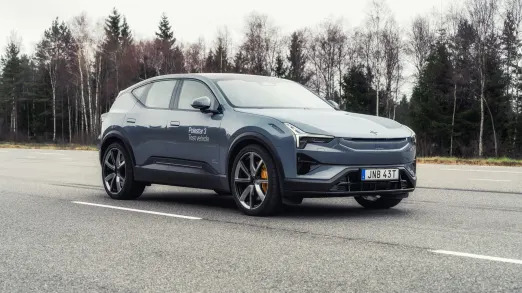
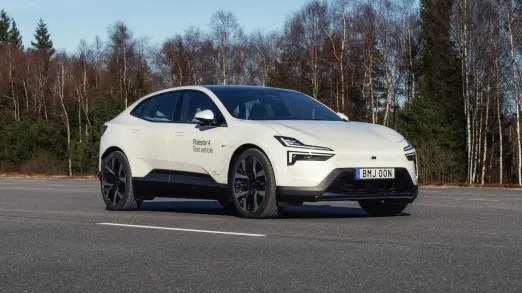
Polestars 3 and 4
Whether or not the 4 earns the SUV label is likely to be overshadowed by a much more controversial matter: It lacks a rear window. This isn’t unprecedented, but the other window-less vehicles you can buy new are those you’d use to move – the Mercedes-Benz Sprinter, for example. This is not that.
So … why did the rear window fly out the window?
“We wanted to have a coupe body style for aerodynamics and at the same time get a really spacious interior,” explains Maximilian Missoni, Polestar’s head of design. Not having a rear window allowed his team to move the D-pillar back. “Another problem with coupes is that (in the rearview mirror) you see a lot of your own interior – you see the headrests and maybe your passengers.”
Polestar boss Thomas Ingenlath defended this choice as well, and his opinion carries a lot of weight. While he has run the brand since its launch, he was in charge of Volvo’s design department for years.
“This is not a gimmick. This is not something we did because we wanted to be talked about. We really believe this is a great innovation, which will drive automotive design technology forward.”

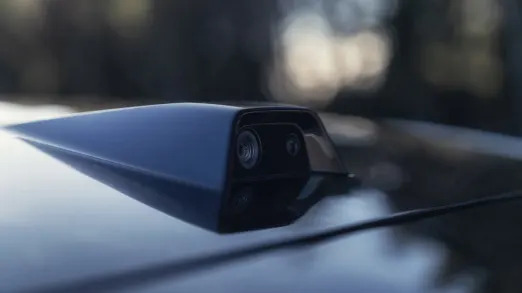
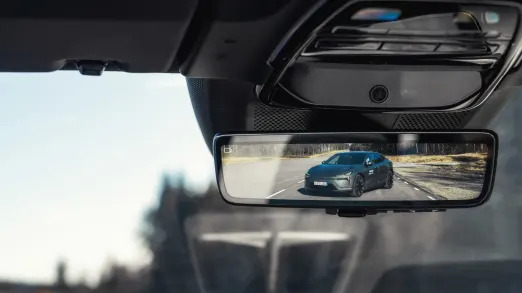
Instead of a window and a conventional rearview mirror, there’s a 2.5-megapixel camera integrated into a little alcove poking out from the roof that sends footage to an 8.9-inch digital rearview mirror. The system comes from Gentex, the Michigan-based firm that invented the auto-dimming rearview mirror and that designed the Boeing 787’s dimming windows. Given our experience with such camera-based “mirrors,” most recently in the Volvo C40, we have our doubts about the consistent performance of this system even though Polestar has taken steps to address some obvious concerns. To make sure it’s not rendered useless by rain or road crud, a little spray nozzle can clean the camera, although Polestar also insists the camera won’t get dirty because of where it’s positioned. To make sure you can still give your kids that mean stare, the in-car display can flip down and turn into a normal mirror to let the driver see the rear-seat passengers.
“Mirror” aside, the 4’s interior puts the same focus on minimalism as the 3 without going overboard. The driver faces a digital instrument cluster, and there’s a portrait-oriented 15.4-inch touchscreen for the Android-powered infotainment system, but Polestar retained a steering column-mounted gear selector, integrated the switch that activates the wipers into the turn signal stalk, and put the volume knob (hooray!) on the cool, double-decker center console. Adjusting the air vents requires poking the touchscreen, however, which reflects a trend that’s slowly but surely spreading across the industry even though one of the first to implement it, Porsche, has already abandoned the effort.
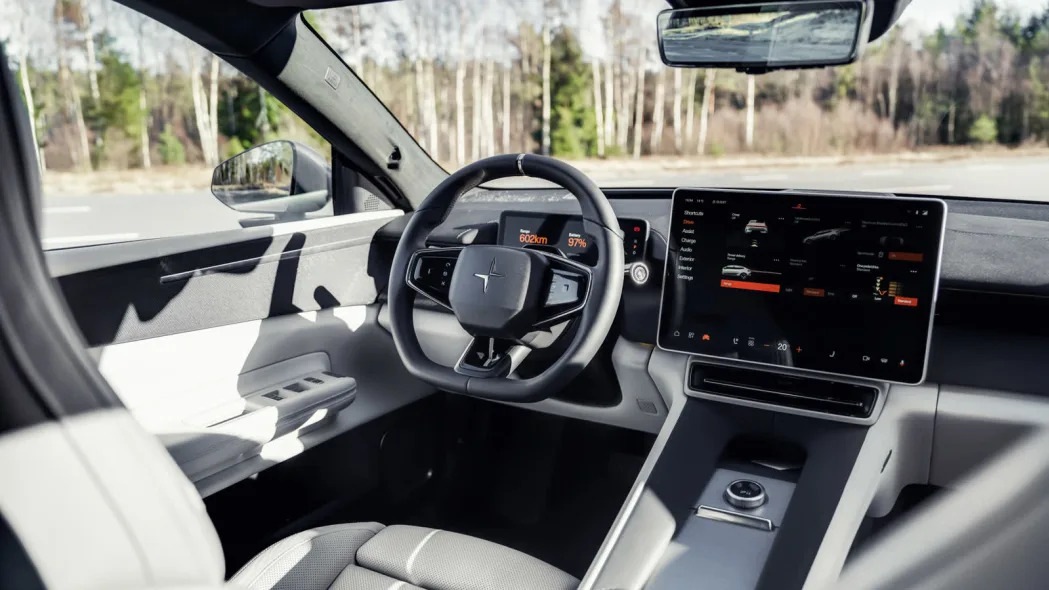
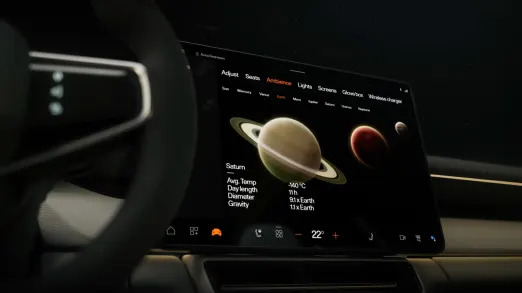
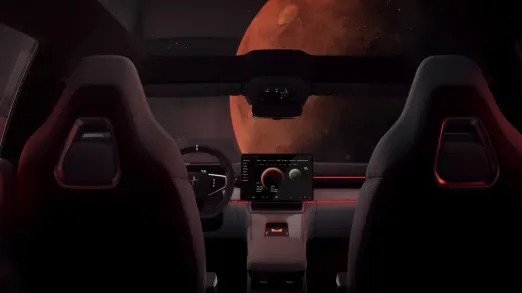
The infotainment system looks a lot like the 3’s. While there’s a ton of information integrated into the display, Polestar made it all easy to find by using color-coded tiles rather than lists. The screen also houses one of the 4’s more unusual features: solar system-themed ambient lighting. Tap the Earth to make the ambient lighting a darker blue, press Neptune if you want a paler shade, choose the sun to get yellow-ish (astronomers will note the sun is in fact white), select Mars for red-ish, and so on. Fun facts accompany each graphic: Did you know that a day on Saturn is only about 11 hours? How about that the diameter of Mars is about half that of Earth?
“We’re not here to talk about outer space; go out and drive the thing, will ya?” says you, the reader. Good point.
At launch, Polestar will offer two versions, both built on a 100-kilowatt-hour lithium-ion battery pack. The entry point into the range is a rear-wheel-drive, single-motor variant rated at 268 horsepower and 253 pound-feet of torque. Next up is an all-wheel-drive, dual-motor version good for 536 horses and 506 pound-feet of twist. The two 4s take 7.1 seconds and 3.8 seconds, respectively, to reach 62 mph from a stop; the lower number makes the all-wheel-drive model the quickest Polestar ever.
The 400-volt electrical system can charge at up to 200 kilowatts. Polestar quotes a maximum driving range of up to 360 miles with all-wheel-drive and 379 miles with rear-wheel-drive, though keep in mind those figures were obtained using Europe’s WLTP testing cycle. The EPA’s figures will be lower.
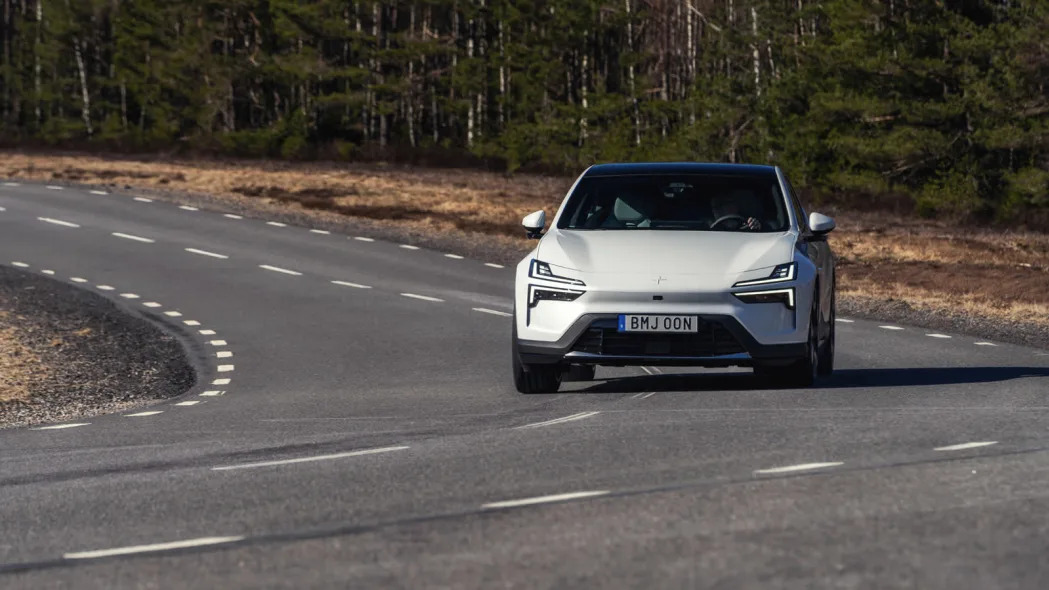
Unlike the 3, which rides on an air suspension system, the 4 gets a conventional steel setup; it’s fixed in the rear-wheel-drive car and adaptive, with three driver-selectable modes to choose from, when you get all-wheel drive. Remember, the 4 is a sportier alternative to the 3, it’s not positioned below it in the Polestar hierarchy. Why the suspension difference, then? Joakim Rydholm, Polestar’s head of chassis development, gives me a simple answer.
“Air suspension isn’t needed,” he says with a smile. That’s a very strong statement from a man who talks about damping ratios with the passion of a Spanish chef explaining the intricacies of making authentic paella, and whose driving skills would make even a crash-test dummy feel safe. The more SUV-like 3 calls for an adjustable ride height made possible by the air springs; something not necessary for the road-going 4. Don’t assume that means one will be more comfortable than the other, though.
“It’s much easier to get really good comfort with steel springs,” added Rydholm. “It sounds strange because everyone thinks an air suspension is like an air balloon, but it’s actually quite difficult to get working properly.”
I drove both versions of the 4 on a handling course located in Volvo’s Hällered proving grounds in southwestern Sweden, and the cars Polestar gave me were pre-production prototypes. Put another way, what I experienced isn’t exactly what buyers will experience when deliveries start, but it’s close.
The rear-wheel-drive 4 isn’t extremely quick off the line, yet it feels relatively sporty around a bend thanks to communicative steering with three driver-selectable weight levels and a chassis setup that delivers sharp, composed handling. It’s not over-the-top, we’re not talking about a brash track car, but it’s better at linking the driver to the road than you might assume considering the massive amount of technology working hard behind the scenes. It wears its weight fairly well, too: Although it tips the scale at about 5,000 pounds, its center of gravity is on par with the 2’s and there’s little body roll. I haven’t driven the 3 to confirm Rydholm’s assertion, but I can at least say that the 4’s handling capabilities don’t come at the expense of comfort: As a passenger in the back, sitting on a well-padded seat with a power-adjustable backrest, the 4 delivers a smooth, quiet ride at highway speeds.
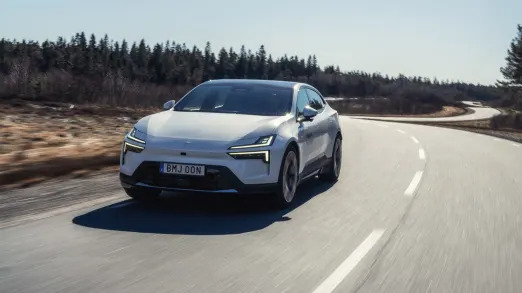
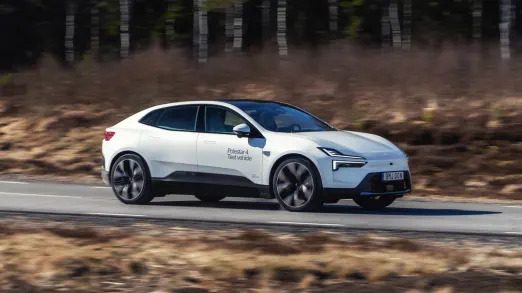
One interesting side-effect of putting the heavy battery pack below the passenger compartment is that the handling difference between the rear- and all-wheel-drive versions is nearly imperceptible. There’s more grip, of course, but the single-motor car doesn’t feel markedly more rear-biased than its all-wheel-drive counterpart unless you start to really push it. With all-wheel drive, you’ve got a 50/50 front-to-rear weight distribution. With rear-wheel-drive, 2% of the weight shifts to the back.
Acceleration is the biggest contrast between the two 4s, and you feel it right away. While the rear-wheel-drive version glides off the line, the all-wheel-drive version zips away and builds up speed like a sports car. It brakes like one, too. My test car featured the optional Performance Pack, which bundles 22-inch alloy wheels, super-sticky Pirelli P-Zero tires, a package-specific suspension system, and, crucially, four-piston front brake calipers that grip ventilated, 15.4-inch rotors. Mash the brake pedal from highway speeds, or higher, and the 4 stops quickly, without alarming vibrations or fade.
I didn’t miss the rear window while driving, but the digital rearview mirror takes some getting used to if you’ve never been in a car with one. You can’t move your head and shift your eyes to get a different angle of what’s behind you, for example, though it provides a clear and wide image. I found the actual mirror too close to the driver’s seat but that’s a personal preference. Try it; you might hate it, or you might never want to drive without it again. The rear passengers will likely miss the rear window more than the driver: not having it makes the back feel darker and less open. It’s a shame because there’s a massive amount of space back there, even with two tall passengers up front.
What we’ve got, then, is an EV marketed as an SUV coupe with the interior space of a big sedan and engaging handling. And, of course, no rear window. Polestar may have created a new segment.
Initially made in China, the Polestar 4 is scheduled to land in the American market in late 2024 as a 2025 model. Pricing information hasn’t been announced yet. The brand notes that a factory in Busan, South Korea, jointly operated by parent company Geely and Paris-based Renault will also manufacture the 4. Which market will get cars from which factory hasn’t been decided yet.

